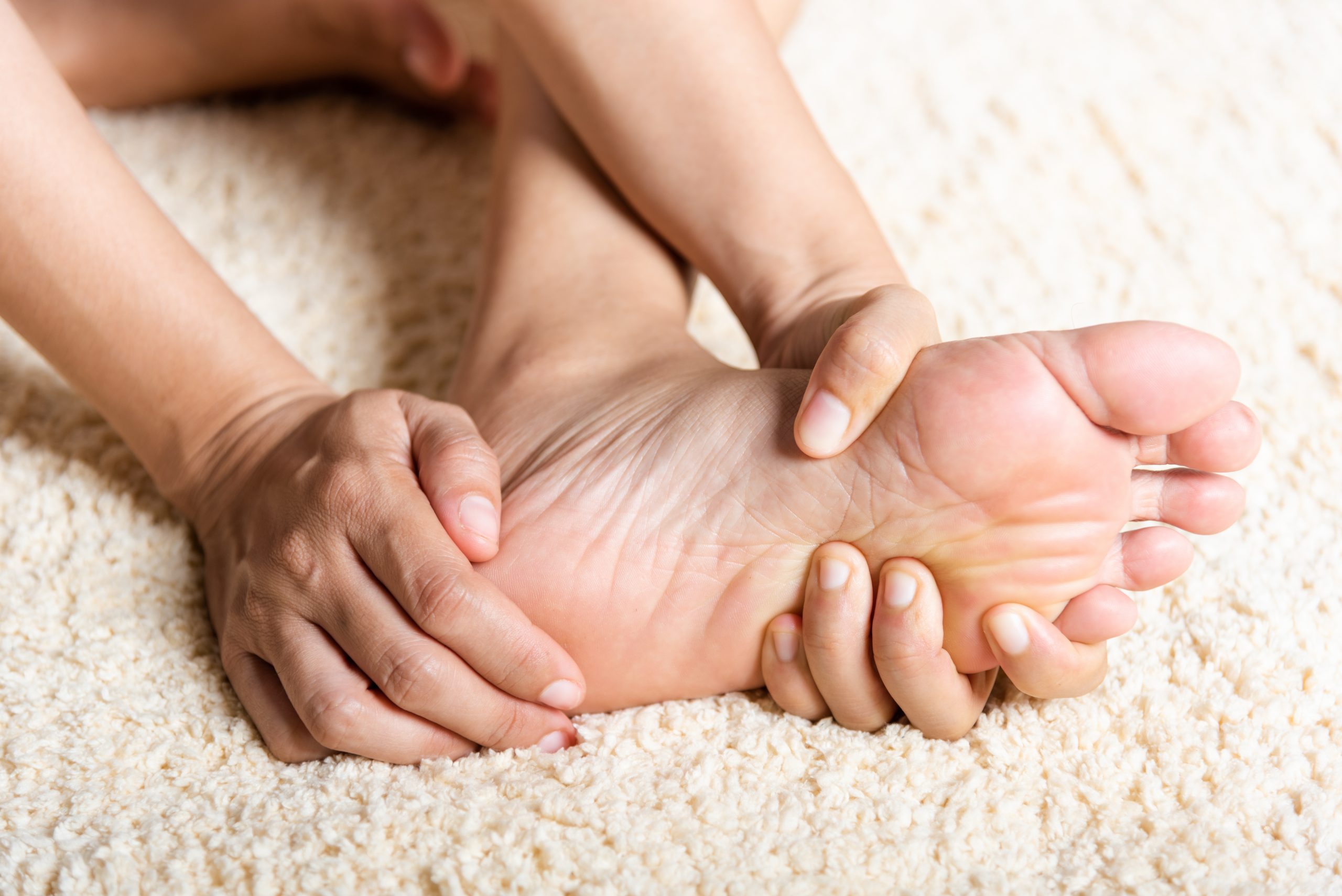
Heel Pain
The most common cause of deep pain on the bottom surface of the heel, is plantar fasciitis (inflammation of the plantar fascia). The plantar fascia a broad band of fibrous tissue which runs along the bottom surface of the foot, from the heel to the toes. It is just below the skin and subcutaneous fat. It helps to secure the arch. Long standing inflammation causes the deposition of calcium at the point where the fascia inserts into the heel bone. This results in the appearance of a bony heel spur on x-ray. The spur itself is not the source of the pain. Stubborn heel pain should be evaluated by your podiatrist. Plantar fasciitis may also present as pain anywhere along the sole of the foot, particularly along the arch and just in front of the heel.

Symptoms
- Sharp pain often localized to the bottom and/or inside margin of the heel
- Often worse on arising in the morning and after rest
- Aggravated by prolonged weight bearing and ambulation
- May severely limit activities
- Most common in middle-aged and overweight adults, and athletes
Causes
- Excessive load on the foot from obesity or overuse
- Excessive flattening of the arch on weight bearing
- Tight plantar fascia, common in persons with high arched feet
- Over pronation of the foot (a complex motion including outward rotation of the heel and inward rotation of the ankle).
What you can do
- Application of ice to the heel area after prolonged activity
- Wear supportive shoes with a stiff heel counter (the part of the shoe which wraps around the heel) and a good arch. A well made running or walking shoe is a good example.
- Sometimes a shoe with a moderately high heel will relieve pressure on the fascia
- Stretching and strengthening exercises will stretch the plantar fascia and strengthen the small intrinsic muscles which stabilize the arch. This should not be attempted when the heel is sore.
- Over-the-counter anti-inflammatory medications containing ibuprofen or aspirin, when tolerated
What the doctor may do
- Prescription doses of anti-inflammatory medication
- Inject powerful anti-inflammatory medication to calm inflammation around the painful area
- Apply taping to relieve strain on the plantar fascia
- Administer physical therapy (eg. ultrasound, cold laser)
- Control foot function with an orthotic
- Prescribe special splints to help stretch the fascia
- Surgical release of the plantar fascia and excision of the heel spur (rarely required).
Other causes of heel pain
- Various types of arthritis
- Trauma to the heel
- Inflammation of the tendons around the heel
- Heel Neuroma (benign tumors of the nerves around the heel)
- Abnormality in the shape of the heel bone
- Foreign body in the heel (e.g. splinter)
- Inflammation of the heel bone (calcaneal) growth plate in children
